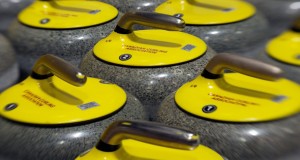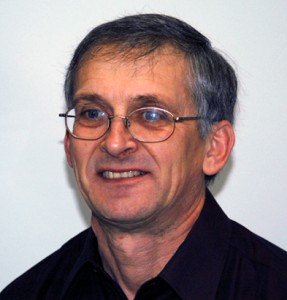Rising from the ashes… Curling Beausejour
It is one of the biggest turnaround stories in Canadian curling. As early as 2000, Curling Beausejour in Moncton was a club that seemed headed for bankruptcy. Then the club’s decision makers changed a bunch of things they were doing wrong and now things are going right. I’ll take you’ll find this story fascinating and some really neat ideas on new ways of doing business. One thing not mentioned in the story was that they were once called the Beausejour Curling Club. They changed the name to Curling Beausejour (and a few ‘clubs’ are getting rid of the word ‘club’ because of the negative connotations that word seems to have; i.e. private, elitist, newcomers not welcome. Enjoy! Danny
(Original story written by James Davidson) They changed their fee system, they changed their rocks, they changed their programs, they changed the ice, they put in a new heating system and they made a host of other changes as well. As a result, they’re now profitable and membership has risen from 160 members to 425 in that period.
“We were up against the wall, and we were crying in our soup about why things weren’t good and how come things weren’t going good,” says Ellery Robichaud, the club’s manager, “Then we started thinking, ‘How do we get new people? How do we get new people?’ So we looked at other sports and looked at what they did and we revamped how we were operating the club.”
Back in 2000, the club’s finances were so bad that the power commission turned the power off temporarily because of an unpaid bill. The 2000 to 2002 years were a struggle just to stay afloat, and the Beausejour came close to being closed down by the club’s mortgage holder.
Clearly, it was time for some fresh ideas. Robichaud says one idea that got things rolling was deciding to advertise instruction courses for beginners. That brought in roughly 100 new members. Other winners were starting up “Pizza in the House” nights aimed at offering potential new curlers a fun night out, and offering one night memberships for just $6 to again draw new curlers in.
Something as seemingly routine as changing a fee structure may not sound very significant, but Robichaud says it also made a huge difference. Before, curlers were asked to come with the yearly fee of $360 to $480 (depending on the type of membership) in one shot, but part of the new approach was charging on a monthly basis. For a lot of people, paying $30 to $40 a month made things a lot easier. “(Maybe) the average person doesn’t have the $360 or $480 in the fall,” Robichaud says. “But most people can find $40 a month in their cash flow.”
The facility upgrades were also a big part of attracting new members to the Beausejour and also leading some old members who had left to come back.
Robichaud says they started by improving the rocks, which by his own admission were very poor. Then the club began upgrading the ice, sheet by sheet, until all five sheets were done. They also painted the building, put in new flooring and a new heating system in the ice shed, and improved the plant so they could do summer ice and have instructional camps in August. They also extended the season, which now runs from mid-August to May 1.
One of the new people they attracted was Russ Howard, who is now the curling pro at the club, and having him on board also helped bring in more new people. “Having Russ helps a lot, no question,” Robichaud says. “When we have better curlers in the club, it gives us credibility.”
The Beausejour also changed the way it handled its volunteers. Rebates on membership prices were offered for volunteers who worked a certain amount of hours, and the club began a new policy of only taking on outside things like weddings and catering that were sure to make a profit and not just break even. Robichaud says this boosted volunteer morale, as helpers could see a benefit to what they were doing.
Despite all the recent success, the club still faces challenges. One is figuring out what to do with a space that Robichaud says is twice as large as it needs. They currently rent out space to the New Brunswick Curling Association and to a dance school.
There’s also the challenge of not getting complacent now that things are going well. “When you get success you can start making bad decisions,” Robichaud says. “We have to make sure we don’t get arrogant and we keep on working on improving. Staying with the status quo will hurt you.”
He adds that the Beausejour is looking to improve its day programs, hire paid ice people and extend the end of the season from May 1 to May 30. And with all the extra space available, the club is hoping to add another three to five sheets of ice. That would make it possible to host national championship events. “I think the future looks very promising for us,” Robichaud says.
Robichaud feels other clubs can learn from the Beausejour’s turnaround. The main lesson, he stresses, is to let go of old ways that don’t work.
“Our number one secret is we changed what we were selling before. We stopped doing things the same way we did them before. With that philosophy you only get the people you’ve already got. If you only ask your members what they want, you’ll get what you’ve already got. But if you want new people, you have to ask people who aren’t curling why they aren’t curling. We had to change the product. Curling clubs that want to sell the same thing they sold in the ’70s just won’t be successful.”
Editor’s note: Ellery Robichaud was the CCA’s Volunteer of the Year in 2002.







